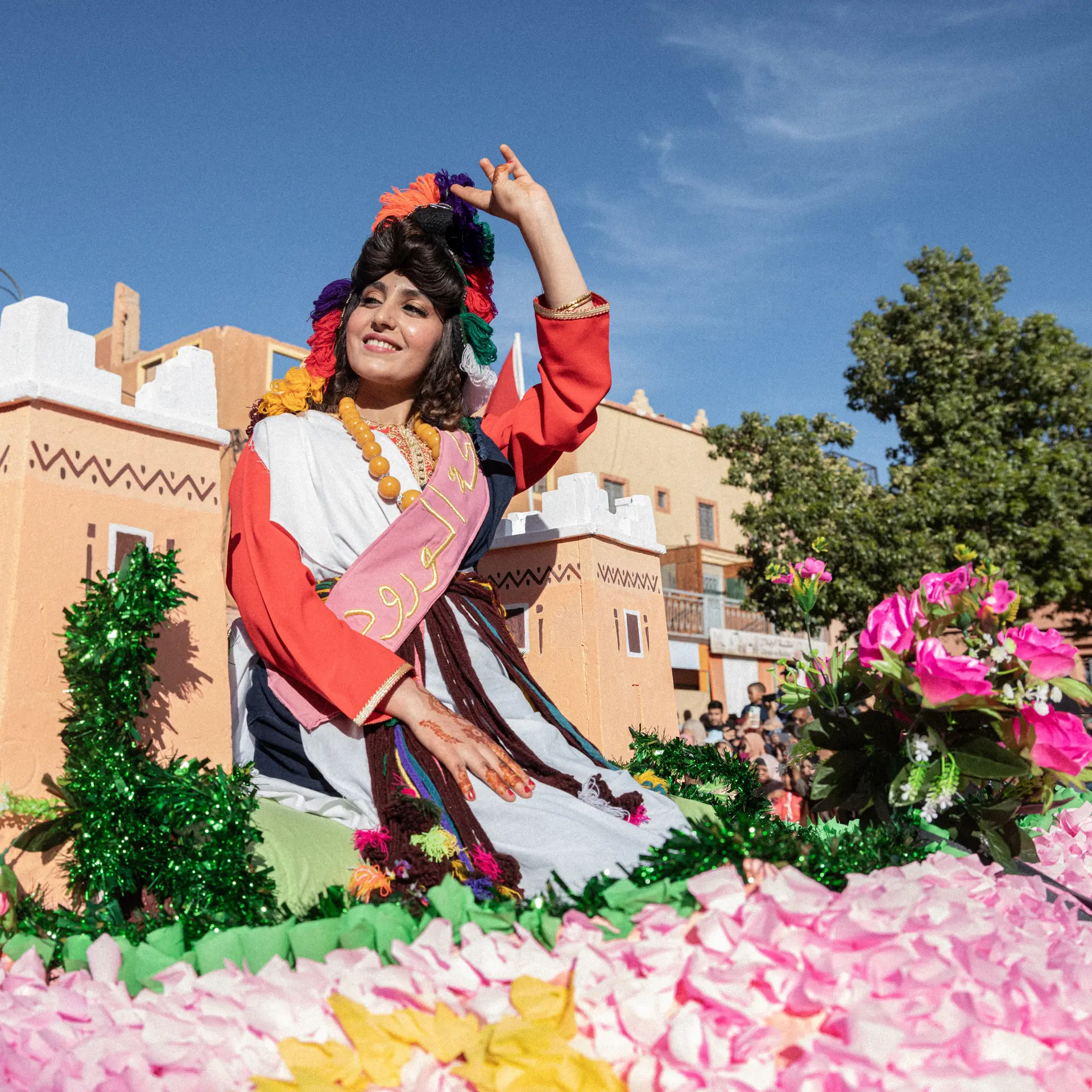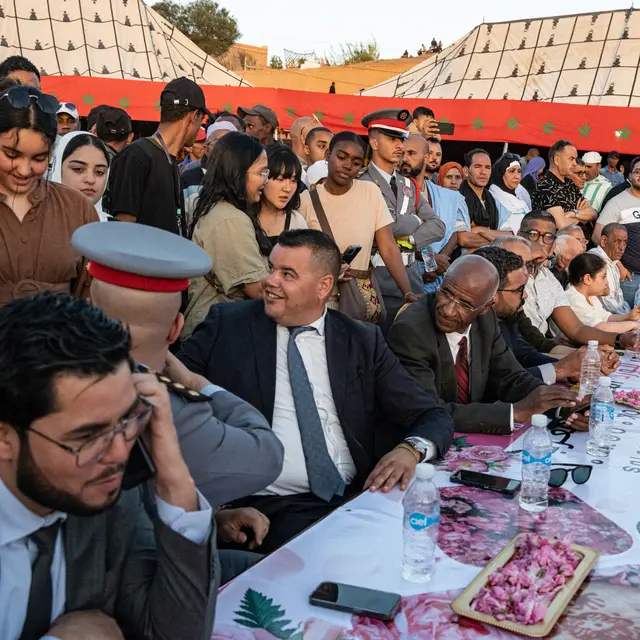
The Kelaat M’Gouna Rose Festival
Photographer Rena Effendi captures the everyday work of rose pickers in Morocco and, in this interview, offers insight into the country’s colourful splendour and tradition.
The rose oil industry in Kelaat M’Gouna has more cultural than commercial significance. Once a year, the rose harvest is celebrated with stirring festivities that turn the small Moroccan town into an exciting destination. The Damascus rose, from which the costly rose oil is extracted, ensures the livelihood of many of the locals, though increasing periods of drought are putting this at risk...
What is the Kelaat M’Gouna Rose Festival all about?
The town of Kelaat M’Gouna lies against the breathtaking backdrop of the Atlas Mountains and traditional Moroccan clay buildings, known as kasbahs. It’s an important regional economic centre, with a flourishing rose oil industry. The Moroccan Rose Valley stretches along the Dades River and its tributaries.
The Moussem – the rose festival – takes place every year during the intense weeks of the rose harvest, from the end of April to the beginning of May, and it has become a popular tourist attraction. During the three-day festival, the population of the town is doubled by native and international visitors. Thousands gather together on Kelaat M’Gouna Main Street to observe the parade of decorated wagons.
During the festival, a beauty pageant also takes place in the town: a jury selects a young unmarried rose picker and crowns her Rose Queen. She takes part in the parade through the town, riding in a horse-drawn carriage, accompanied by traditional Imazighen dance groups and music.
What does the rose harvest mean to the local inhabitants?
The rose harvest is an important part of the local economy, and the livelihoods of many of these people depend on the yields of the harvest. The communities are very proud of the rose oil industry, and of the great value it has for Moroccan culture and traditions. In fact, the rose is the country’s national flower, and symbolises love, faithfulness and joy.
The harvest is primarily carried out by women, right?
Before the production of rose oil in Kelaat M’Gouna became an important branch of industry, local farmers planted the rose bushes to protect their vegetable gardens from animal pests. Now, in a good year, Kelaat M’Gouna produces nearly 4,000 tons of the wild Damascus rose, a flower which – so the story goes – was brought to the region and domesticated in the 10th century, by pilgrims coming from Mecca.
In the morning twilight, I photographed a small group of women gathering wild roses from the local hedgerows, to sell to a trader in the village. I also observed the harvest on the large rose farms, where women picked rose buds in the early morning hours, before the rays of the sun could make the petals open up and release their aroma.
How do the rose bushes survive in the Moroccan climate?
The Damascus rose is very well adapted to the desert climate. If there is a shortage of rain, the plants do produce less buds, but they still survive. In a year with plenty of
rain, the harvest is correspondingly much greater. When I travelled to Kelaat M’Gouna, they were experiencing a year-long drought, which had cut the yield by half.
The shortage of water is balanced out by a drip watering system. This is the most efficient irrigation method for the local rose production. The use of an open water storage system, on the other hand, is ineffective and leads to large losses, as the water evaporates too quickly.
Is the impact of climate change already in evidence?
Last year, there was a small amount of precipitation, but this followed a six-year period of drought that had seriously affected the harvest. Climate change has led to the fact that many formerly profitable growing areas are now only used seasonally or occasionally. The lower yields naturally also have a negative impact on Kelaat M’Gouna as a business centre, which makes it difficult for the people.
What items are produced with the roses?
The most beautiful rose buds are sorted by hand, by women, and then distilled into rose oil in traditional bronze kettles at a boiling temperature of 100 °C. For one litre of the precious oil, you need around 4,000 tons of blossoms. The remaining liquid is turned into rose water or other perfumery products. The less beautiful blossoms are left to dry, then packed and sold as tea.

What effects are attributed to the products?
Apart from its application in aroma therapies, rose oil is rich in antioxidants and is said to have medicinal and anti-inflammatory properties. Furthermore, it is said to have a positive effect on skin health and is therefore often used in the cosmetics industry for anti-ageing products.
How did you move from painting to photography? How is it reflected in your practice?
I spent about two years in an atelier, working with oils on canvas, before I felt that it was not the right medium for me, for my artistic expression. When a friend lent me a camera, I recognised that this was the urgent change I needed to be able to deal more directly with the world around me, and to capture true human stories and experiences. But my artistic background in drawing and painting has an on-going influence on my photography. While I prefer the immediacy and dynamic that the camera allows me, I mainly use natural light, and I try to reach the same depth and emotion as achieved in classic paintings.
What was the greatest photographic challenge in the realisation of this series?
It was difficult to photograph the rose pickers in the morning. The women moved very fast between the tall bushes, and were hardly visible. Furthermore, the window of time for the harvest is very short. In the morning hours, before the sun comes up, the temperatures in the region are very low; but quickly rise throughout the day, until it’s very hot. I needed a number of attempts before I could understand the rose pickers’ rhythm. During the festival parade, the biggest challenge was to keep pace with the mass of people in the midday heat.
How did the Leica help you in this regard?
The medium-format Leica DSLR allowed me to work faster, and keep up with the moving masses of people at the festival. The optical viewfinder is great for seeing
the world and framing images. The way in which the camera’s sensor interprets colour and light comes very close to the look of film, which I’m accustomed to from my analogue cameras.
Rena Effendi
Born in Baku, Azerbaijan, in 1977, Rena Effendi came to documentary photography via painting, and is considered one of the most important contemporary representatives of the genre. Her focus is on people, where her deep empathy is reflected in her work. She travels the world, regularly, on assignment for National Geographic. Her pictures have been exhibited and published worldwide. She has produced two monographs: Pipe Dreams: A Chronicle of Lives along the Pipeline (2009) and Liquid Land (2013). You can find out more about the photographer on her website and on her Instagram channel.










